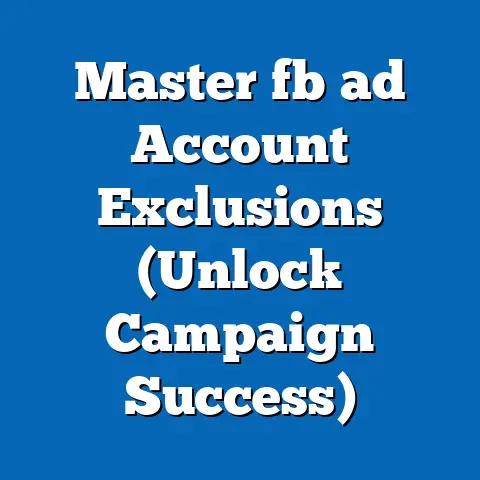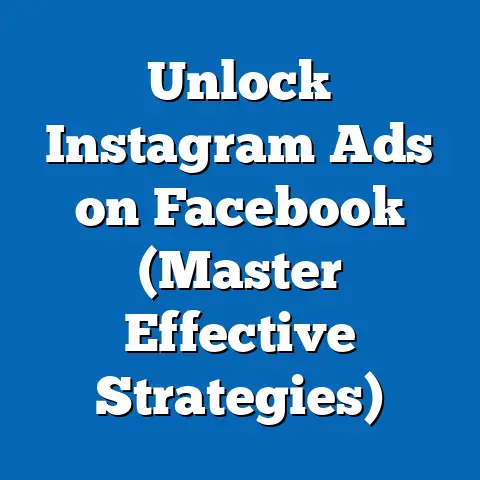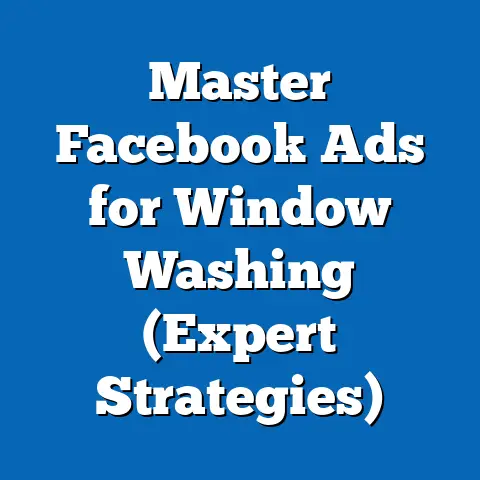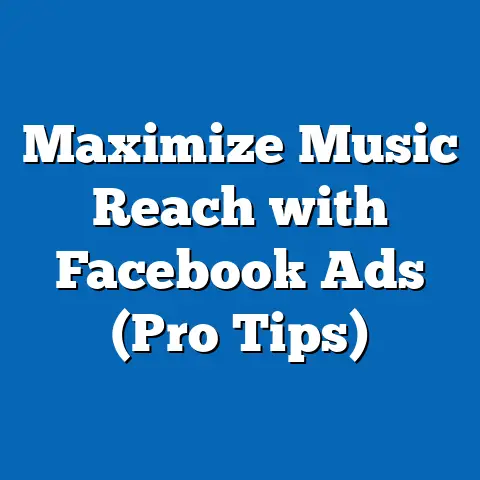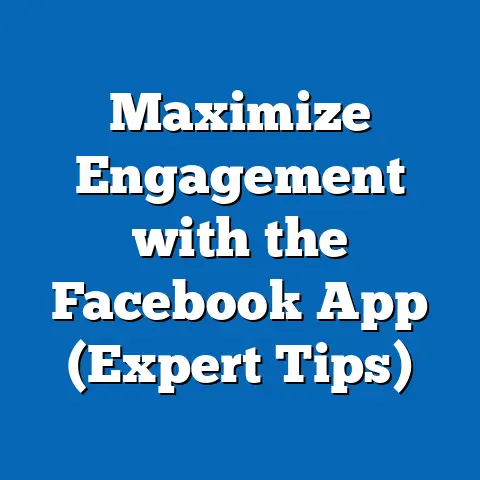Will Facebook Ads Appear on Instagram? (Insightful Guide)
The world of social media advertising is a constantly shifting landscape. What worked last year might be completely ineffective today. As a digital marketing specialist, I’ve spent years navigating these changes, and one question I hear frequently is: “Will my Facebook ads actually show up on Instagram?” The short answer is yes, but the long answer, as always, is more complicated and nuanced.
Facebook’s acquisition of Instagram back in 2012 changed the game entirely. It wasn’t just about consolidating power; it was about integrating advertising capabilities across both platforms. Today, the ability to run ads seamlessly on both Facebook and Instagram is a significant advantage for businesses of all sizes.
Section 1: The Current Landscape of Social Media Advertising
Social media advertising has exploded in the last decade. It’s no longer a “nice-to-have” but a necessity for any business looking to reach its target audience effectively. I remember when I first started in digital marketing; the focus was primarily on search engine optimization (SEO) and email marketing. Social media was seen as a secondary channel, a place to build brand awareness but not necessarily drive direct sales. How things have changed!
The Growth of Ad Spending on Facebook and Instagram
According to recent statistics, global digital ad spending is projected to reach over $600 billion by 2024, with social media accounting for a significant portion of that. Facebook and Instagram, in particular, continue to dominate the social media advertising market. Why? Because they offer unparalleled reach and sophisticated targeting options.
The numbers speak for themselves. In 2023, Facebook reported over 3 billion monthly active users, while Instagram boasted over 2 billion. That’s a massive audience pool for advertisers to tap into. Moreover, Facebook’s advanced targeting capabilities, based on user demographics, interests, behaviors, and even offline activities, allow businesses to deliver highly relevant ads to the right people at the right time.
Shifting User Demographics and Preferences
One of the key trends I’ve observed is the shift in user demographics and preferences. While Facebook remains popular across a wide age range, Instagram has become the go-to platform for younger audiences. Millennials and Gen Z are particularly active on Instagram, drawn to its visual-first approach and emphasis on authentic, engaging content.
This shift has significant implications for advertising strategies. If your target audience is primarily young adults, Instagram is likely the more effective platform for reaching them. However, it’s important to understand the nuances of each platform. Instagram users are generally more receptive to visually appealing, creative ads that blend seamlessly with the platform’s aesthetic.
Types of Ads on Facebook and Instagram
Both Facebook and Instagram offer a variety of ad formats to suit different marketing objectives. Here’s a breakdown of the most popular options:
- Image Ads: These are simple yet effective ads that feature a single image and accompanying text. They’re ideal for showcasing products, promoting events, or driving traffic to a website.
- Video Ads: Video ads are highly engaging and can be used to tell a story, demonstrate a product, or capture attention in a crowded news feed. I’ve found that short, attention-grabbing videos tend to perform best.
- Carousel Ads: Carousel ads allow you to showcase multiple images or videos in a single ad unit. This format is perfect for highlighting different features of a product, telling a sequential story, or driving traffic to multiple landing pages.
- Stories Ads: Stories ads are full-screen, vertical ads that appear between users’ stories. They’re highly immersive and can be used to drive brand awareness, generate leads, or promote sales.
- Collection Ads: Collection ads are designed for e-commerce businesses. They feature a cover image or video followed by a selection of products, allowing users to browse and purchase directly from the ad.
- Reels Ads: These ads appear in the Instagram Reels feed and can be up to 30 seconds long. They are a great way to reach a large audience and drive engagement.
Each format has its strengths and weaknesses, and the best choice depends on your specific marketing goals and target audience. I’ve seen businesses achieve great results with image ads, while others find that video ads are more effective. The key is to experiment and see what works best for your brand.
Expert Insights on Ad Effectiveness
To gain a deeper understanding of ad effectiveness on Facebook and Instagram, I often turn to industry reports and expert opinions. Studies have shown that visually appealing ads with clear calls to action tend to perform best on both platforms. However, there are also subtle differences.
For example, a report by HubSpot found that Instagram ads with user-generated content (UGC) tend to be more authentic and trustworthy, leading to higher engagement rates. On the other hand, Facebook ads with strong social proof, such as testimonials or reviews, can be highly effective in driving conversions.
Key Takeaway: The social media advertising landscape is dynamic and ever-evolving. Businesses need to stay informed about the latest trends and best practices to maximize their ROI. Understanding user demographics, experimenting with different ad formats, and paying attention to expert insights are all essential for success.
Section 2: Integration of Advertising Between Facebook and Instagram
The seamless integration of advertising between Facebook and Instagram is one of the most powerful features of the Facebook Ads Manager. It allows businesses to manage their ad campaigns across both platforms from a single interface, streamlining the process and maximizing efficiency.
Managing Instagram Ads Through Facebook Ads Manager
One of the first things I learned when I started running ads was the power of the Facebook Ads Manager. It’s a centralized platform where you can create, manage, and track your ad campaigns across both Facebook and Instagram. Here’s a step-by-step overview of the process:
- Create a Facebook Business Manager Account: If you don’t already have one, you’ll need to create a Facebook Business Manager account. This is a free tool that allows you to manage your Facebook pages, ad accounts, and other business assets in one place.
- Connect Your Instagram Account: Once you have a Business Manager account, you’ll need to connect your Instagram account to it. This will allow you to run ads on Instagram using the Facebook Ads Manager.
- Create a New Ad Campaign: In the Ads Manager, click the “Create” button to start a new ad campaign.
- Choose Your Campaign Objective: Select the objective that best aligns with your marketing goals, such as brand awareness, website traffic, lead generation, or conversions.
- Define Your Target Audience: This is where the magic happens. Facebook’s advanced targeting options allow you to reach a highly specific audience based on demographics, interests, behaviors, and more.
- Choose Your Ad Placements: In the “Placements” section, you can choose where you want your ads to appear. Select “Automatic Placements” to let Facebook optimize your ad delivery across both Facebook and Instagram, or choose “Manual Placements” to specify exactly where you want your ads to run.
- Set Your Budget and Schedule: Determine how much you’re willing to spend on your ad campaign and set a start and end date.
- Create Your Ad Creative: Design your ad creative, including the image or video, headline, and body text. Make sure your ad is visually appealing and relevant to your target audience.
- Review and Publish: Before publishing your ad campaign, review all the settings and make sure everything is correct. Then, click the “Publish” button to launch your ad.
Benefits of Integration
The integration of advertising between Facebook and Instagram offers several key benefits:
- Simplified Campaign Management: Managing your ads across both platforms from a single interface saves time and effort.
- Cross-Platform Targeting: You can use Facebook’s advanced targeting options to reach the same audience on both Facebook and Instagram, ensuring consistent messaging and branding.
- Optimized Ad Delivery: Facebook’s algorithm can optimize your ad delivery across both platforms, showing your ads to the people who are most likely to engage with them.
- Unified Reporting: You can track the performance of your ads across both platforms in a single report, making it easier to measure your ROI.
Case Studies of Successful Cross-Platform Campaigns
To illustrate the power of cross-platform advertising, let’s look at a few case studies:
- Daniel Wellington: The watch brand Daniel Wellington successfully used Facebook and Instagram ads to drive brand awareness and sales. They targeted a young, fashion-conscious audience with visually appealing image and video ads, showcasing their minimalist watches in lifestyle settings. By running ads on both platforms, they were able to reach a wider audience and increase their brand visibility.
- Airbnb: Airbnb used Facebook and Instagram ads to promote their platform and drive bookings. They targeted travelers with ads featuring stunning photos of unique accommodations around the world. By leveraging Facebook’s interest-based targeting, they were able to reach people who were actively planning a trip, resulting in a significant increase in bookings.
- Nike: Nike used Facebook and Instagram ads to promote their new athletic shoes. They created a series of engaging video ads featuring athletes and influencers, showcasing the shoes in action. By running ads on both platforms, they were able to reach a wider audience of fitness enthusiasts and drive sales.
These case studies demonstrate that cross-platform advertising can be highly effective when done right. The key is to understand your target audience, create visually appealing ads, and optimize your ad delivery across both platforms.
Implications for Businesses
The integration of advertising between Facebook and Instagram has significant implications for businesses of all sizes. It allows them to:
- Reach a Wider Audience: By running ads on both platforms, businesses can reach a larger and more diverse audience.
- Improve Brand Consistency: Cross-platform advertising ensures consistent messaging and branding across both Facebook and Instagram, strengthening brand recognition.
- Increase ROI: By optimizing ad delivery across both platforms, businesses can improve their ROI and drive more conversions.
- Gain Deeper Audience Insights: Facebook’s analytics tools provide valuable insights into audience demographics, interests, and behaviors, allowing businesses to refine their targeting and improve their ad performance.
Key Takeaway: The integration of advertising between Facebook and Instagram is a powerful tool that businesses can use to reach a wider audience, improve brand consistency, increase ROI, and gain deeper audience insights. By managing their ads across both platforms from a single interface, businesses can streamline the process and maximize efficiency.
Section 3: The Future of Advertising on Instagram
Looking ahead, the future of advertising on Instagram is likely to be shaped by several key factors, including evolving user behavior, technological advancements, and platform updates. As a digital marketing specialist, I’m constantly monitoring these trends to anticipate what’s coming next and help businesses stay ahead of the curve.
Evolving User Behavior
User behavior is constantly evolving, and advertisers need to adapt to these changes to remain effective. One of the most significant trends I’ve observed is the increasing demand for authentic and engaging content. Users are becoming more discerning and are less likely to engage with ads that feel inauthentic or intrusive.
This trend has several implications for advertising on Instagram:
- Focus on Storytelling: Ads that tell a compelling story are more likely to capture attention and resonate with users.
- Embrace User-Generated Content: User-generated content is seen as more authentic and trustworthy than traditional advertising.
- Personalize Your Messaging: Tailor your messaging to the specific interests and needs of your target audience.
- Be Transparent: Be upfront about the fact that you’re running an ad, but do it in a way that feels natural and authentic.
Technological Advancements
Technological advancements are also playing a significant role in shaping the future of advertising on Instagram. Artificial intelligence (AI) and machine learning (ML) are being used to optimize ad delivery, personalize messaging, and improve ad targeting.
For example, Facebook’s AI-powered ad platform can automatically optimize your ad creative, targeting, and bidding strategy to maximize your ROI. ML algorithms can also be used to predict which users are most likely to engage with your ads, allowing you to target them more effectively.
Instagram’s Features That Enhance Ad Visibility
Instagram is constantly introducing new features that enhance ad visibility and engagement. Some of the most notable features include:
- Shopping Tags: Shopping tags allow businesses to tag products in their posts and stories, making it easy for users to purchase directly from the platform.
- Reels: Reels are short, entertaining videos that are similar to TikTok videos. They’re highly engaging and can be used to reach a large audience.
- IGTV: IGTV is Instagram’s long-form video platform. It allows businesses to create longer, more in-depth videos that showcase their products, services, or brand story.
These features provide new opportunities for businesses to connect with their target audience and drive sales.
Potential New Ad Formats and Features
Looking ahead, I expect to see even more innovation in ad formats and features on Instagram. Some potential developments include:
- Augmented Reality (AR) Ads: AR ads could allow users to try on products virtually or interact with brands in new and engaging ways.
- Interactive Ads: Interactive ads could allow users to participate in polls, quizzes, or games directly within the ad.
- Personalized Ads: Personalized ads could be tailored to the specific interests and needs of each individual user.
The Role of Influencer Marketing
Influencer marketing is already a significant force on Instagram, and its role is likely to grow even further in the future. Influencers can help businesses reach a wider audience, build brand awareness, and drive sales.
When working with influencers, it’s important to:
- Choose the Right Influencer: Select an influencer who is relevant to your target audience and has a genuine connection with your brand.
- Give Them Creative Freedom: Allow the influencer to create content that feels authentic and natural.
- Track Your Results: Measure the impact of your influencer marketing campaigns to see what’s working and what’s not.
Key Takeaway: The future of advertising on Instagram is likely to be shaped by evolving user behavior, technological advancements, and platform updates. Businesses need to stay informed about these trends and adapt their strategies accordingly to remain effective.
Section 4: Challenges and Opportunities
Advertising on Instagram is not without its challenges. Businesses face issues such as ad fatigue, competition, and algorithm changes. However, these challenges also create opportunities for innovative advertising strategies that differentiate brands in a crowded market.
Challenges of Advertising on Instagram
- Ad Fatigue: Users can become fatigued by seeing the same ads over and over again. This can lead to lower engagement rates and a decrease in ROI.
- Competition: The advertising landscape on Instagram is highly competitive. Businesses need to stand out from the crowd to capture attention and drive results.
- Algorithm Changes: Instagram’s algorithm is constantly changing, which can make it difficult for businesses to predict how their ads will perform.
- Relevance: One of the biggest challenges is making sure that the content is relevant to the audience.
Opportunities for Innovative Advertising Strategies
Despite these challenges, there are also many opportunities for businesses to innovate and differentiate themselves on Instagram. Some strategies include:
- Create Highly Engaging Content: Focus on creating content that is visually appealing, entertaining, and informative.
- Use User-Generated Content: User-generated content is seen as more authentic and trustworthy than traditional advertising.
- Personalize Your Messaging: Tailor your messaging to the specific interests and needs of your target audience.
- Experiment with New Ad Formats: Try out new ad formats, such as Reels ads or AR ads, to see what works best for your brand.
- Partner with Influencers: Influencers can help you reach a wider audience and build brand awareness.
- Consider Contests and Giveaways: Contests and giveaways are great ways to get the attention of your target audience.
Adapting Messaging and Creative Strategies
To resonate with Instagram’s audience, businesses need to adapt their messaging and creative strategies. This means:
- Focusing on Visuals: Instagram is a visual platform, so your ads need to be visually appealing and attention-grabbing.
- Keeping It Short and Sweet: Instagram users have short attention spans, so your ads need to be concise and to the point.
- Using Emojis: Emojis can help your ads stand out and convey emotion.
- Being Authentic: Instagram users value authenticity, so your ads need to feel genuine and relatable.
Understanding Platform-Specific Nuances
It’s also important to understand the platform-specific nuances that affect ad performance. For example:
- Hashtags: Hashtags are essential for reaching a wider audience on Instagram.
- Stories: Stories are a great way to engage with your audience in a more personal and interactive way.
- IGTV: IGTV is a good option for creating longer, more in-depth videos.
- Reels: Reels are perfect for creating short, entertaining videos that go viral.
Key Takeaway: Advertising on Instagram presents both challenges and opportunities. By understanding the challenges and adapting their strategies accordingly, businesses can differentiate themselves in a crowded market and achieve their marketing goals.
Section 5: Conclusion
In conclusion, the question of whether Facebook ads appear on Instagram is definitively answered: yes, they do. The integration of advertising between Facebook and Instagram is a strategic move that allows businesses to leverage the strengths of both platforms, reaching a wider audience and improving their ROI.
Throughout this article, I’ve explored the current landscape of social media advertising, highlighting the trends, user behaviors, and ad formats that are shaping the industry. I’ve delved into the technical aspects of the Facebook Ads Manager, explaining how businesses can manage their ad campaigns across both platforms from a single interface. I’ve also speculated on the future of advertising on Instagram, considering the role of technology, user behavior, and platform updates.
While advertising on Instagram presents its own set of challenges, such as ad fatigue and algorithm changes, these challenges also create opportunities for innovative advertising strategies that differentiate brands in a crowded market. By adapting their messaging, creative strategies, and understanding the platform-specific nuances, businesses can resonate with Instagram’s audience and achieve their marketing goals.
The future of advertising on social media is dynamic and ever-evolving. As a digital marketing specialist, I believe that businesses need to stay agile and responsive to emerging trends, constantly experimenting with new strategies and technologies to remain effective. The interconnectedness of Facebook and Instagram in the advertising ecosystem is a testament to this evolution, and businesses that embrace this integration are more likely to succeed in the long run.
So, will Facebook ads appear on Instagram? Yes, they will, and they will continue to play a significant role in the advertising landscape for years to come. The key is to understand how to leverage this integration effectively, creating compelling content, targeting the right audience, and adapting to the ever-changing dynamics of social media.
Call to Action
I encourage you to stay informed about updates in social media advertising and to consider how you can adapt your own strategies to leverage the strengths of both Facebook and Instagram. Experiment with different ad formats, targeting options, and messaging to see what works best for your brand. And most importantly, always put your audience first, creating content that is valuable, engaging, and relevant to their needs. By doing so, you can unlock the full potential of Facebook and Instagram advertising and achieve your marketing goals.

